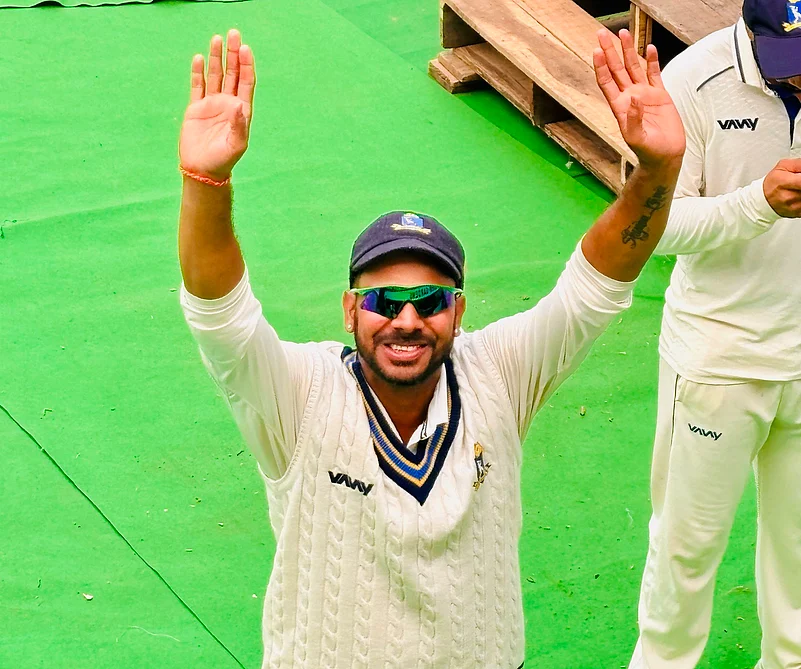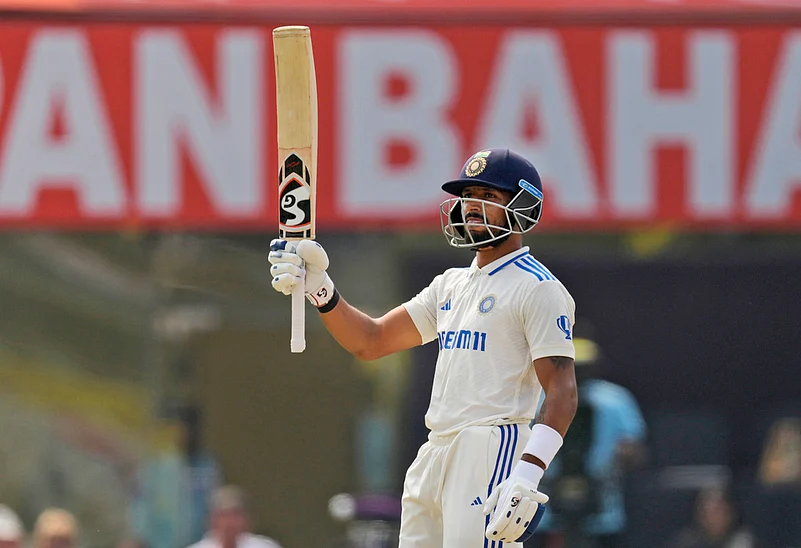The Ranji Trophy, India‘s iconic national championship with a glorious heritage dating back 90 years, has been in the news for all the wrong reasons of late, with disturbing reports of India stars skipping the tournament for white-ball franchise cricket making the headlines. (More Cricket News)
This is yet another indication of how times have changed in the Indian cricketing ecosystem over the years. Not so long ago, Ranji Trophy was the tournament for young cricketers to aspire for and play in. Ranji Trophy cricketers were heroes to many a youngster, growing up.
Deservedly so, for it was by no means easy to get into a Ranji side then, with only the red-ball format being played, and everyone including Test cricketers regularly playing domestic cricket since the number of international games were far fewer than today.
Standards were very high, not to speak of the intense competition for places, with every cricketer aspiring to be picked for the 15 places available in a state team in that one format. It took a lot of talent, hard work and luck to get there and many a talented young cricketer who deserved to play at that level did not make it, simply because there were no places in their state teams.
Which is why when you did make it to a Ranji Trophy side, the sense of satisfaction and achievement was very high, and Ranji Trophy cricketers of the time enjoyed a pleasing respect and regard from all those who played and followed the game.
And that recognition made their commitment and efforts seem worthwhile at a time when there was were no match fees, only a tiny ‘daily allowance’ that barely stretched to the end of the day, if even that.
And no one at that time really thought that there would ever be anything more than that in financial terms. But it only added to the charm of the iconic event.
Things have changed hugely since then and of late, there have been rumblings about whether the Ranji Trophy is still relevant, in various quarters. And it all came to a head recently, when Manoj Tiwary -- former India cricketer, outgoing Bengal Ranji captain and sports minister in the West Bengal government -- took to X (formerly Twitter) just before his farewell first-class game.
At the end of his two-decade-long cricket career, Tiwary openly questioned the way in which the value of the iconic tournament has eroded in recent years. He said he was “utterly frustrated” and even called upon the Board of Control for Cricket in India (BCCI) to “cancel the event”.

This came close on the heels of the controversy that erupted around some current India cricketers like Ishan Kishan and Shreyas Iyer deciding to stay away from Ranji Trophy games for their respective state teams, in spite of a clear BCCI directive to all cricketers not on national duty to participate in the premier domestic red-ball tournament.
On the other hand, there was also Sarfaraz Khan’s strong debut in the recent third Test against England at Rajkot, which marked a huge validation for all those young cricketers who have made their names playing solid, old-fashioned red-ball Ranji Trophy cricket. Though Sarfaraz has done well in the Indian Premier League (IPL) as well, it was heartening to see how easily he took to Test cricket with that red- ball background. And the same goes for Dhruv Jurel, although he has played a comparatively lesser number of first-class games.

For nine decades now, this iconic competition has been the cradle and nurturing ground of Indian cricket, where generations after generations of Test cricketers were born and bred. In the past, the Ranji Trophy has always held pride of place in the national cricketing consciousness, and entire generations of aspiring cricketers and fans have grown up listening to radio commentary on these matches.
They have been thrilled by the exploits of greats like Sunil Gavaskar, Gundappa Viswanath, Bishan Bedi, Bhagwat Chandrashekhar, Erapalli Prasanna, Venkatraghavan, Rajinder Goel, Padmakar Shivalkar, Ashok Mankad, Mohinder and Surinder Amarnath, Abid Ali, Dilip Doshi, Ambar Roy and Gopal Bose, to name a few, all of whom regularly turned out for their states in the Ranji Trophy. Much of the cricket craze in this country in those earlier times was fuelled and sustained by fans glued to transistors and envisaging these stars walking out to bat or bowl, in their mind’s eye.
Ranji Trophy was synonymous with solid, first-class cricket, and remained the sole pathway for moving forward into the Duleep Trophy zonal sides and for the lucky few, further to the Irani Trophy, which was a de facto India selection trial, where players picked for the Rest of India side squared off in a five-day game against the Ranji champions.
The only exception to this route was probably Ravi Shastri, who played Test cricket for India in 1981 against New Zealand, straight out of university cricket, which was equally big in those days, before he had played a single Ranji Trophy game.
ALSO READ: The Arrival Of India's Young Guns
I still remember the heady days when two East Zone Ranji Trophy matches were played in our small town in the early ‘70s, with a strong Bihar side led by Ramesh Saxena, taking on Orissa (now Odisha) and Assam respectively. As cricket-crazy schoolboys, we were over the moon as these players descended on our town and we were put on ‘scoreboard duty’, to assist the scorers in manually changing the numbers on the board.
The sheer innocence of those simpler times!
Growing up, we wanted more than anything else, to emulate those boyhood heroes and play in the Ranji Trophy.
And it was such a pleasure when it actually happened. That was the magical influence and effect that the tournament had over the life of many a young cricketer in those days.
Players earned 50 or 100 rupees a day and often travelled in non-AC First Class coaches to games. And many a time, someone like a GR Viswanath would finish playing a Test match in one part of the country, travel back over two nights to Bangalore by train, and be out on the ground playing a Ranji Trophy match for Karnataka, the next morning. Such was the pride associated with winning matches for your state team in those days and reaching the final rounds of the tournament and perhaps, eventually winning the trophy.
Those were the days of uncovered pitches, and helmets were still some distance away into the future. There were still no purely professional Indian cricketers, because it just was not possible to make a living form the sport in India at the time, and everyone had to have a job outside of cricket, that supported and sustained them and their families.
But the standards were very high and a five-day Ranji Trophy final or semi–final would be in no way inferior in quality to a Test match.
Teams were organised zone-wise at the time, and the two top teams after the zonal Ranji Trophy league qualified for the knockout rounds of the tournament. This meant that a player from a team that did not qualify for the knockouts would get to play just four or five Ranji Trophy matches per season, if he was lucky.
And that remained the format, right up until the 2001 season, when it changed to the Elite and Plate groups with a few more changes over the following years that led to players starting to get eight to nine matches per season.
And around that time came the revolutionary concept of match fees for players, which has climbed steadily over the years and stands at a very healthy INR 68,000 per day for a four-day Ranji Trophy game today, for those in the playing XI.
Which is way more than what most young Indians can dream of earning for a day’s work at any level.
Amazingly however, this is considered to be small money today in the cricketing world. Remuneration that is inadequate to guarantee their full-time commitment to red-ball cricket at the state level.
Somewhere in between, the BCCI also introduced a small pension for former Ranji Trophy cricketers, those who had played 25 matches or more, prior to the arrival of match fees. While a decent number of cricketers were benefitted by this, some of them in dire need of succour, it left out a vast chunk of equally deserving cricketers who had played less than 25 games.
This at a time when you would need to play at least for seven to eight seasons to get to that magic figure, even if you were lucky enough to play all matches for your team in a season.
Considering that cricket was still very much an amateur sport in the 1970s and early 80s for most players, and that they relied on their outside jobs to sustain their playing passion, this was a tall order for many. It wasn’t easy to play for seven-eight seasons when you also simultaneously had a life and professional career to build, outside cricket.
So a large number of very good first-class cricketers missed out on what essentially would have been some recognition in material terms from their national cricketing body, for their talent and commitment to the game in the best years of their lives, at a time when there were no financial benefits for that devotion.
More so in view of the largesse that was to follow, for later-day cricketers and support staff.
And that sadly continues to remain the position, years after the BCCI cricketers’ pension was introduced, in spite of many efforts from different quarters to bring down the number of qualifying matches to a more reasonable figure over the years.
Even in the late 80s, there were no match referees or cameras at the ground in Ranji Trophy games and umpires were still mortally scared of the ‘captain’s report’ on their performance at the end of the game, when a ‘zero’ or ‘one’ rating from an India star was bad news for their appointment for subsequent matches.
This usually meant that players from the weaker teams were often at a disadvantage and at the receiving end of some very dodgy umpiring decisions.
(That concludes part 1 of this series. The next instalment delves into how IPL seems to have altered the priorities of young Indian cricketers like Ishan Kishan and Shreyas Iyer, and the adverse effects on batting and bowling techniques by not playing Ranji Trophy)
The views and opinions expressed are those of the author. The author is a veteran Wing Commander of the Indian Air Force, who has played Ranji Trophy for Services.
















